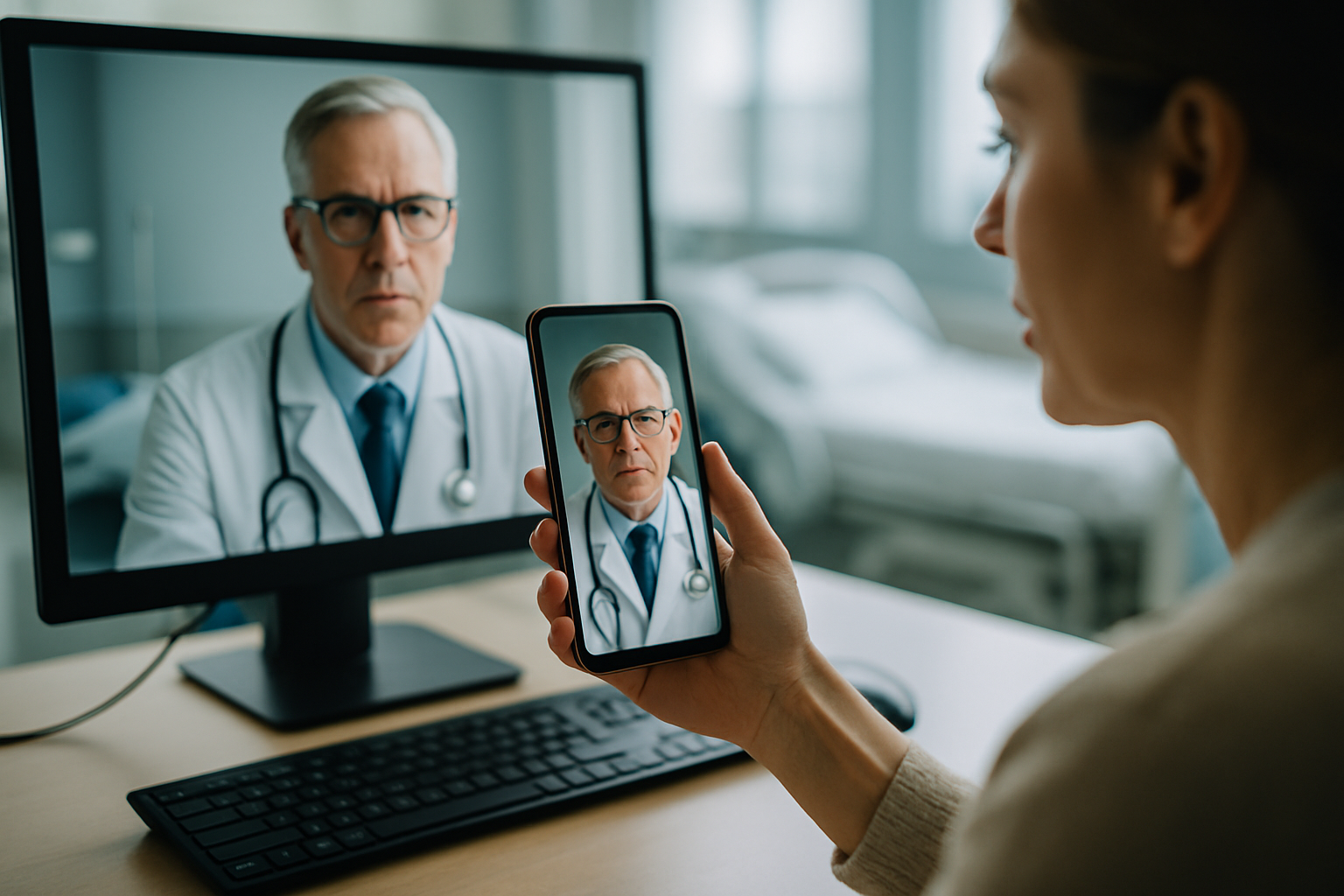Teleconsultation: Revolutionizing Healthcare Access Through Telecommunications
The intersection of healthcare and telecommunications has given rise to a transformative approach to medical consultations. Teleconsultation, a cutting-edge solution leveraging advanced communication technologies, is reshaping how patients interact with healthcare providers. This innovative practice not only enhances accessibility to medical expertise but also introduces a new paradigm in healthcare delivery, promising to overcome geographical barriers and time constraints. As we delve into the world of teleconsultation, we'll explore its far-reaching implications, technological underpinnings, and the potential to democratize healthcare access on a global scale.

In its infancy, teleconsultation was primarily used for rural healthcare outreach, connecting remote communities with urban medical centers. The limitations of early video conferencing technologies and bandwidth constraints initially restricted its widespread adoption. However, as telecommunications infrastructure improved and smartphones became ubiquitous, the stage was set for a teleconsultation revolution.
Technological Enablers of Modern Teleconsultation
The backbone of effective teleconsultation lies in robust, high-bandwidth telecommunications networks. The rollout of advanced broadband technologies, including fiber-optic networks and high-speed mobile data, has been crucial in enabling high-quality, real-time video consultations. These networks provide the necessary bandwidth and low latency required for seamless communication between patients and healthcare providers.
Furthermore, the development of secure, HIPAA-compliant video conferencing platforms has addressed privacy concerns, a critical factor in healthcare communications. These platforms incorporate end-to-end encryption and strict access controls, ensuring that sensitive medical information remains confidential.
Artificial Intelligence (AI) and Machine Learning (ML) are also playing an increasingly important role in teleconsultation. These technologies are being integrated into teleconsultation platforms to assist with preliminary diagnoses, appointment scheduling, and even real-time language translation, further enhancing the accessibility and efficiency of remote healthcare services.
The Impact on Healthcare Delivery Models
Teleconsultation is fundamentally altering the landscape of healthcare delivery. Traditional models of care, centered around physical clinics and hospitals, are being complemented and, in some cases, replaced by virtual care environments. This shift is particularly significant in managing chronic conditions, follow-up care, and mental health services.
For patients with mobility issues or those living in remote areas, teleconsultation offers unprecedented access to specialist care. It eliminates the need for long-distance travel, reducing both the time and financial burden associated with seeking medical attention. Moreover, it allows for more frequent check-ins and monitoring, potentially leading to better health outcomes through early intervention and consistent care.
Healthcare providers are also benefiting from this paradigm shift. Teleconsultation enables them to see more patients, optimize their schedules, and even provide care across geographical boundaries. This flexibility can lead to improved work-life balance for healthcare professionals and potentially address the issue of physician shortages in certain regions.
Challenges and Future Directions
Despite its promises, teleconsultation faces several challenges. The digital divide remains a significant barrier, with many rural and low-income areas lacking the necessary telecommunications infrastructure for high-quality video consultations. Addressing this disparity requires concerted efforts from both the healthcare and telecommunications sectors, as well as supportive government policies.
Regulatory frameworks are another area of concern. As teleconsultation transcends geographical boundaries, issues of licensing, malpractice insurance, and reimbursement become more complex. Harmonizing regulations across different jurisdictions while ensuring patient safety and quality of care is an ongoing challenge.
Looking ahead, the integration of wearable devices and remote monitoring tools with teleconsultation platforms holds immense potential. These technologies could provide healthcare providers with real-time patient data, enabling more accurate diagnoses and personalized treatment plans. Additionally, the incorporation of augmented reality (AR) in teleconsultation could enhance the ability to perform remote physical examinations, further bridging the gap between virtual and in-person care.
Conclusion: A New Era of Healthcare Accessibility
Teleconsultation represents a paradigm shift in healthcare delivery, one that leverages the power of telecommunications to overcome traditional barriers to access. As technology continues to evolve and infrastructure improves, we can expect teleconsultation to become an increasingly integral part of global healthcare systems.
The potential of teleconsultation extends beyond mere convenience; it has the power to democratize access to quality healthcare, regardless of geographical location or socioeconomic status. As we move forward, the continued collaboration between the healthcare and telecommunications sectors will be crucial in realizing this potential and shaping a future where quality healthcare is truly accessible to all.





